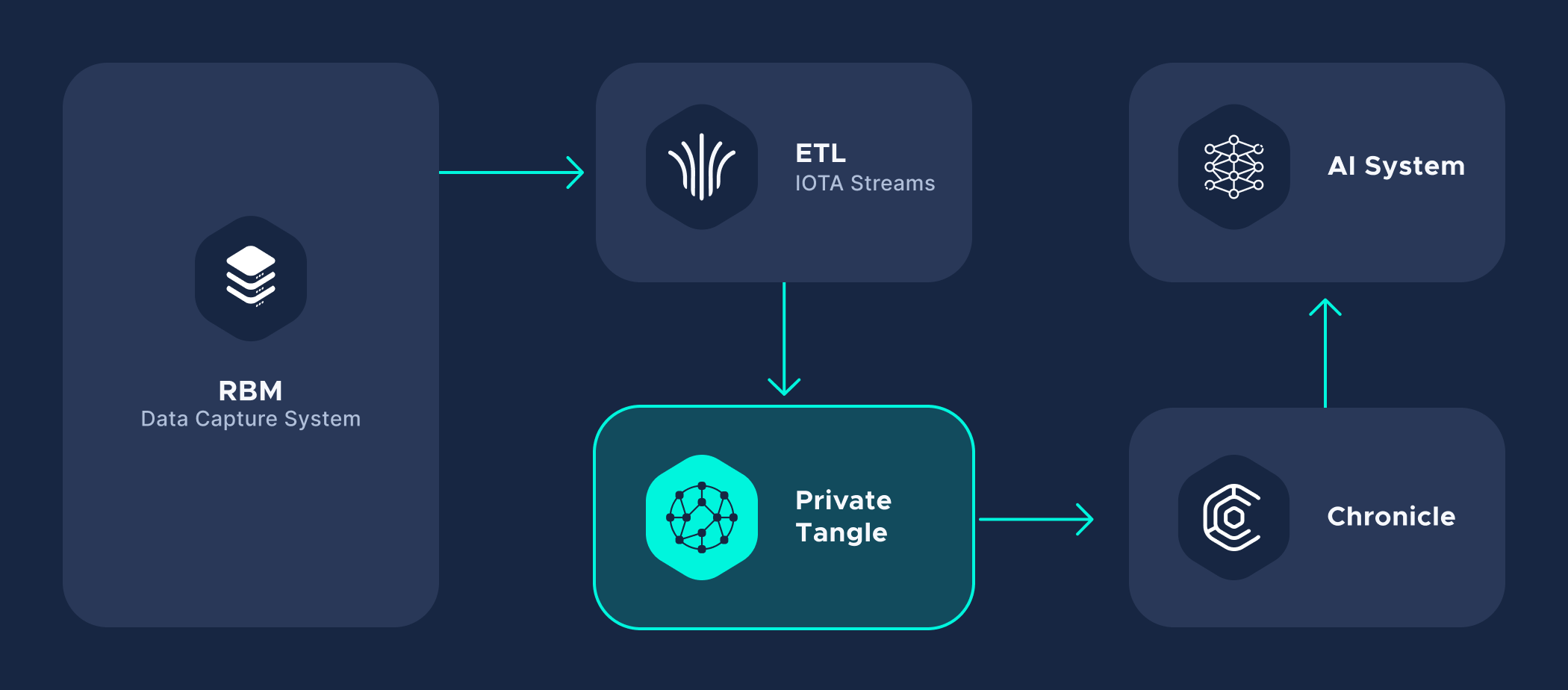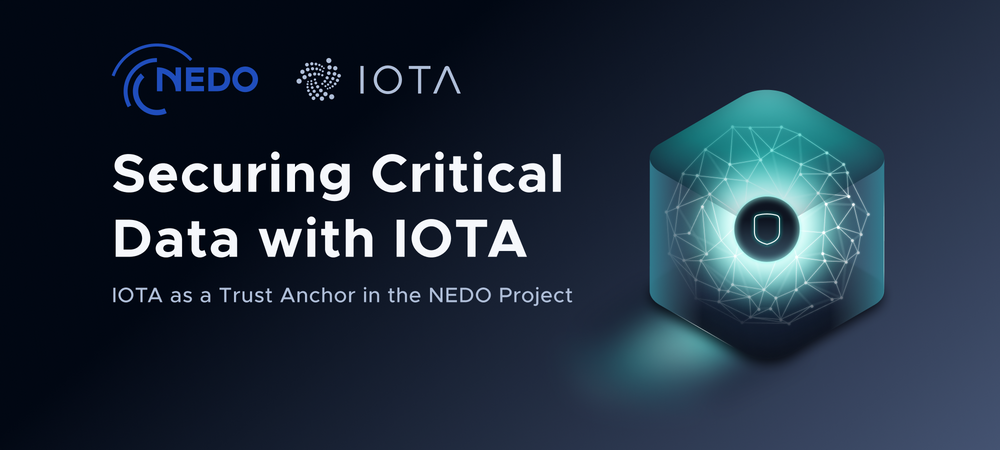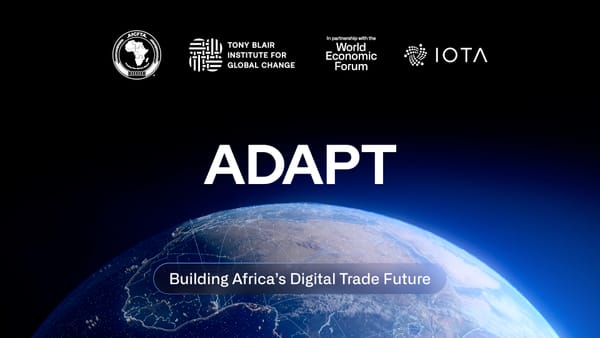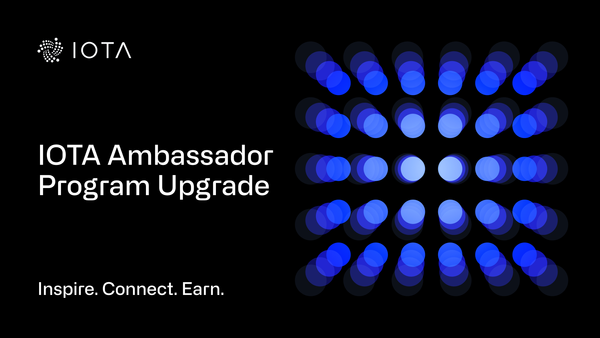Securing Critical Data with IOTA
IOTA as a Trust Anchor in the NEDO Project
TL;DR:
A research project sponsored by Japan’s largest public management organization NEDO (The New Energy and Industrial Technology Development Organization) and involving several Japanese organizations has demonstrated the feasibility of IOTA as an infrastructure for securing critical industrial data. During the project, IOTA’s Tangle was tested as a trust pillar for risk-based maintenance systems deployed in power plants, energy plants, industrial plants, petrochemicals, and oil refining plants, with excellent results to test the viability of IOTA as a trust anchor for critical data.
First announced in October 2020, a major research project between the IOTA Foundation and NEDO reached its successful conclusion in February 2022. NEDO is Japan’s largest public management organization promoting research and development as well as the deployment of industrial, energy, and environmental technologies. The goal of the project was to develop and experiment with novel technology in order to strengthen the security, longevity, and durability of critical infrastructure assets such as power plants and industrial plants in Japan and abroad. Several well-known Japanese companies specializing in critical infrastructures, including OMC, IMC, and Best Materia, participated in the project.
The main use case on which the project builds is risk-based maintenance (RBM). RBM prioritizes the allocation of maintenance resources toward assets (for instance, engines, turbines, or pumps) that carry the most risk if they were to fail. Maintenance activities across a facility are optimized to reduce the risk of failure, which is measured as the combination of the probability of failure (PoF) and the consequences of failure (CoF).
Specifically, maintenance processes are conducted on critical infrastructure assets that have a higher probability of failure and at the same time risk the most negative consequences of failure; for instance, assets like steam generators in nuclear plants could lead to human risks or economic loss.
In order to operate, the RBM process needs the plant's asset data, such as the history of vibrations originating from an engine or the flow rate through a pump or steam pipe. Such data may come from periodic inspections or from sensing devices that monitor the assets (such as flowmeters, odometers, barometers, or gyroscopes).
After the data is collected and previous incidents and data have been taken into account, assets that should be put under maintenance operations are determined. Traditionally, these decisions have been made by experts; however, due to Japan’s aging population, these experts are reaching retirement age and their knowledge is gradually being lost. That is where the NEDO research project comes into play. The project’s main idea is to substitute human experts with an artificial intelligence (AI) system capable of making decisions using data anchored to IOTA’s distributed ledger and expert knowledge captured and incarnated by AI.
Trusted data and the Tangle
A critical aspect of any AI-based system is trustworthy data. This is especially true of the NEDO RBM system's focus on critical infrastructure, where the consequences of unsecured data could be catastrophic. For instance, if a hacker gains access and changes the data, the next round of predictions by the risk-based maintenance system will not be accurate. As a result, maintenance will not be performed on the assets that need it, dramatically increasing the risk of failure.
In scenarios like these, using IOTA in tandem with an AI and RBM is an essential solution: IOTA acts as a trust anchor for the plant’s assets data fed into the AI, guaranteeing data auditability, immutability, and security.
The main considerations for using IOTA in the NEDO RBM system are:
- As the data is provided by multiple stakeholders (inspectors, plant managers, public authorities, and so on) it is necessary to establish a decentralized system that does not privilege any one group of actors. To fulfill this aim, the IOTA Tangle has been chosen due to its scalability and data transfer capabilities which are not covered by other DLT products in the market.
- A plant's asset data is highly sensitive, making it an ideal candidate for a private (or “permissioned”) version of the IOTA Tangle. This private Tangle can, in addition, be anchored into the public mainnet for additional data security, without revealing any information.
- The data transfer capabilities of the Tangle enable the various stakeholders to gain secure access to the same immutable data simply by deploying a Hornet node. This makes it easy to extend consortia with minimal effort and associated costs.
- As the durability of the data is a critical factor (in industrial cases like these, data has to be archived for years), the deployment of IOTA’s Chronicle permanode (based on ScyllaDB) is in order. Chronicle, off the shelf, is capable of indexing and archiving all data messages going through the Tangle, regardless of the volume of data. If needed, data can also be re-indexed creating additional ScyllaDB keystores and tables.
Architecture setup

The figure above depicts the architecture of the experimentation prototype developed during the NEDO research project. Under the technical direction of the IOTA Foundation, the prototype was developed by Fujisoft, the partner of reference for the IOTA Foundation in Japan. The prototype has demonstrated the feasibility of the architectural approach and has been functionally validated by IMC and OMC, the Japanese companies acting as end-users in the project.
The four elements of the experimentation prototype are:
- The RBM Data Capture systems: These are the systems that provide the plant’s assets data.
- The ETL (Extract Transform and Load) processes: These are ETLs that take the data from RBM Data Capture Systems and anchor it to the IOTA Tangle. This prototype uses IOTA Streams and the anchors library as the anchoring mechanism. With IOTA Streams we ensure the data is properly encrypted, while at the same time, it is guaranteed that only authorized subscribers can get access to the data.
- Hornet Nodes connected to a private Tangle running on AWS infrastructure in Japan: The deployment of the private Tangle has been performed using IOTA “one-click Tangle” tools. In the future, this private Tangle could be anchored to the mainnet using an Assembly smart contract.
- The Chronicle Permanode: Chronicle enables data durability by persisting all the data messages transferred through the Tangle into a ScyllaDB cluster deployed on AWS. Chronicle simply receives MQTT notifications from Hornet nodes and persists the data. The same mechanism can be used to index the data on a custom basis should future applications have that need.
These four pillars ensure that all the RBM data is captured and anchored so that it is securely and immutably stored. From that point on, the AI system will take the data, using another ETL for instance, verify it through IOTA and perform the AI algorithms to determine the assets that should be put under maintenance. In the future these AI executions could also be made auditable through IOTA, increasing the transparency, auditability and traceability of the RBM processes, enabling the soundness of the AI to be verified and any unconformity in the event of failure to be traced.
According to Tsunehisa Nakajima, Chief Operating Officer of Fujisoft America, Inc.: “Fujisoft America and Fujisoft Japan have joined this NEDO project as IOTA partners. As one of the trusted system integrators in Japan, we have closely observed that major Japanese companies have shown a strong interest in blockchain technology over the past few years. The IOTA Tangle’s low resource requirements, zero fees, and fast transactions have solved the barriers many Japanese companies have faced in adopting blockchain technology. We strongly believe that the brilliant accomplishment of this NEDO project will promote the adoption of IOTA in the Japanese market.”
Conclusion
The NEDO project has been a fantastic opportunity to test the viability of IOTA as a trust anchor for critical data. The experimentation results are promising and are going to serve as a very important input into the evolution and the establishment of reference architectures for data use cases with IOTA. And, last but not least, it has extended the IOTA community to Japan, opening the doors to future opportunities in the country. Thus, we look forward to working on research and innovation projects with the IOTA community in Japan and around the world to foster the adoption of DLT and IOTA technologies.
If you have new ideas or insights related to what we achieved with NEDO, get in touch!




